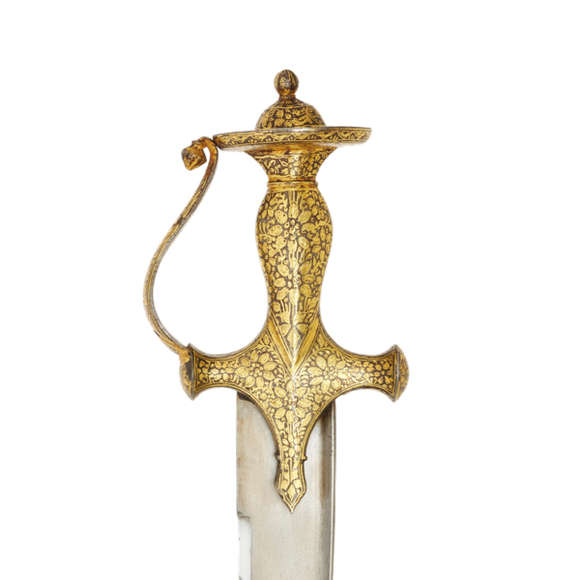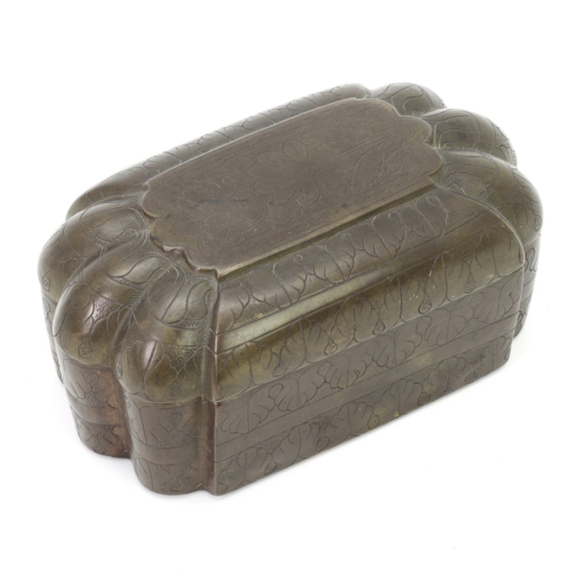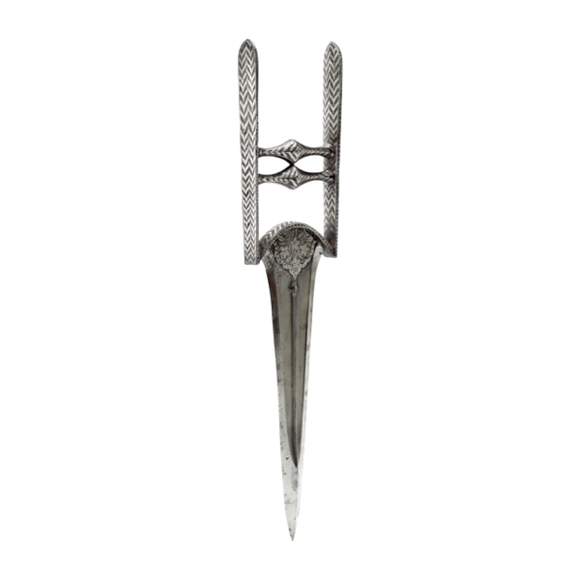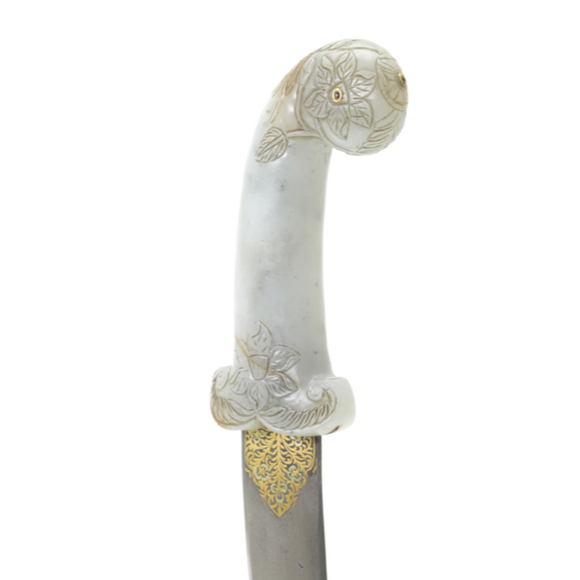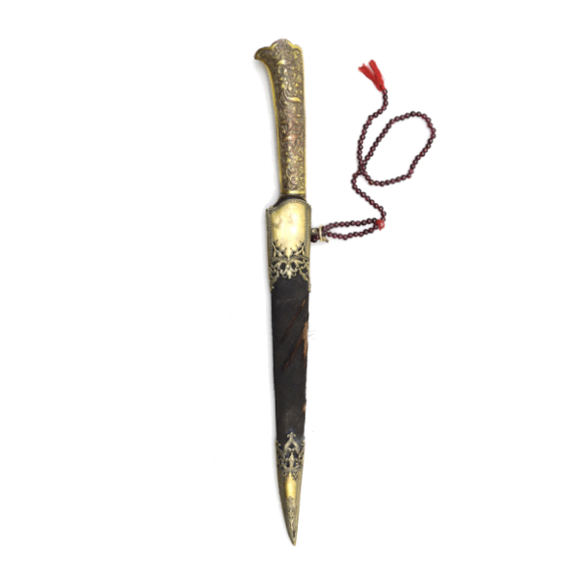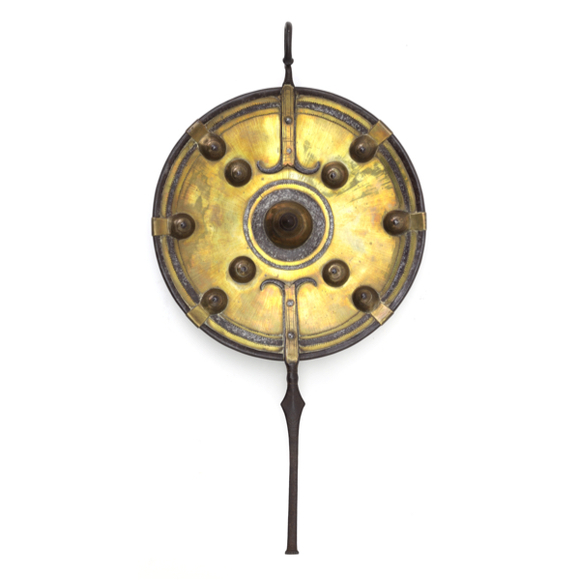Language: Hindi
Source: Lord Egerton of Tatton
Description
Sosun pattah is the common name used by collectors, dealers, and curators to describe a class of Indian swords with a recurved, widening blade, often on a talwar hilt.
It is more correctly transcribed as sosan patta (सोसन पत्ता), where sosan (سوسن) is Persian for "lily" and patta is Hindi for "leaf".
Sosan patta or Sosun pattah are often very well made. The decor is usually typically north Indian, and many pieces are identified as being from Punjab or Lahore.
 A fine sosan patta with wootz blade and richly golden damascened hilt.
A fine sosan patta with wootz blade and richly golden damascened hilt.
Sold by Mandarin Mansion in 2018.
Lord Egerton of Tatton:
"578T. Sword; "Sosunpattah; broad blade. Padded basket hilt ornamented with bidri work. Time of Tippoo Sahib."

The sword described by Egerton. This is what Rawson would come to call the Islamic form.
And:
"Sosunpattah". A short, broad, heavy sword, slightly bent, point inclining upwards. Back of handle and ferrule richly ornamented with gold and silver. Worn by all ranks in Hindostan. Time of Tippoo. Tower 337. Additional Collection.1
P.S. Rawson:
"A form of sword which the recorded provenances show clearly to have been Rajput is the Kopis-bladed weapon called in Urdu "Sosun Pattah", meaning lily leaf. It was mentioned above that this name is given to two forms of sword similar in shape but of different ancestries.
The Hindu Rajput form has a blade with a smoothly recurved edge, and a reverse edge which is near straight, curving only slightly forward, with a concave segment taken out of it near the tip; the blade has a deep belly.
This Rajput form is always found mounted in the Hindu Basket hilt, whereas the other, Islamic, form has an Indo-Muslim hilt. Unfortunately there is a complete lack of evidence bearing on the historiy of the Rajput Sosun Pattah. Apart from the modern instances preserved in the National collections, all of which date from the eighteenth century, there is only one scrap of testimony. This is a picture of a sword with a distorted form of that of the Sosun Pattah supposedly from a manuscript of the Ain-I-Akbari representing the weapons in use in India at the time of Akbar. It is probably that the Rajput Sosun Pattah is related, by direct descent, both to the sword with forward angled blade known in the 10th century in Rajasthan and the Deccan Kopis blade, and it is thus a parallel development wih the Nepalsese Kukri, the South Indian Flamboyant sword, and the obsolete long Dao of the Khasis and Kacharis of Assam."
 The Rajput form that Rawson is referring to. From a drawing supposedly based on a drawing in the Ain-i-Akbari.
The Rajput form that Rawson is referring to. From a drawing supposedly based on a drawing in the Ain-i-Akbari.
As reproduced in Egerton's Indian and Oriental Arms and Armour.
For a number of sosun patah of both forms described by Rawson, see Robert Elgood's works Arms & Armour at the Jaipur Court and Rajput arms and Armour. One of these bears inscriptions attributing it to Mughal emperor Aurangzeb (1618-1707).3
Notes to introduction
1. Lord Egerton of Tatton; Indian and Oriental Arms and Armour. Dover Publications; Revised edition, 2002. Pages 104 and 123.
2. P. S. Rawson; The Indian Sword, Herbert Jenkins LTD, London, 1968. Page 46.
3. Robert Elgood; Arms & Armour at the Jaipur Court, Niyogi Books, 2015. Pages 110–113 and Robert Elgood; Rajput arms and Armour, Niyogi Books, 2017. Pages 342-351.

